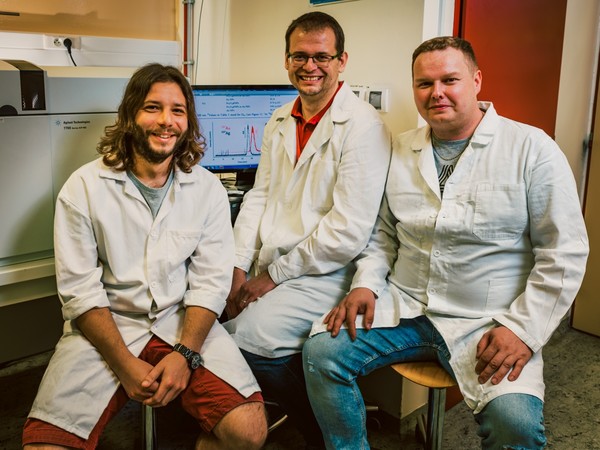A new unique method that allows scientists to monitor the behaviour of nanoparticles in an environment simulating natural conditions has been developed by scientists from the Department of Analytical Chemistry at the UP Faculty of Science. Experts have been focussing on the movement and interactions of nanoparticles in solutions that mimic natural conditions in organisms or the environment. Their approach will help shed light on the fate of nanoparticles in, for example, the human body or wastewater, about which there are still many unknowns. The results of the Olomouc scientists’ work have been published in the renowned journal of the American Chemical Society, Analytical Chemistry.
“We focused on developing a method that would allow us to monitor nanoparticles in the environment of other nanoparticles, even in solutions or complex mixtures that correspond to the situation in living organisms or the environment. Such a method may not only lead to a better understanding of the behaviour of nanoparticles, for example inside cells or in wastewater, but may also lead to a more detailed recognition of their mutual interaction and other possible effects arising between the nanoparticles themselves,” said one of the authors of the study, Jan Petr from the Department of Analytical Chemistry.
The method developed by the Olomouc scientists enables, among other things, a closer study of the circulation of nanoparticles in the environment. The nanoparticles used in the study enter wastewater and subsequently rivers, seas and oceans. “Here, they meet other nanoparticles and can interact with each other, which can ultimately multiply their negative properties, such as toxicity. Until now, it has not been possible to study these effects in detail, but thanks to our method we can now observe and describe them in detail. We believe that our method can help to prevent these undesirable effects in the future,” said Petr.
The scientists used a unique combination of capillary electrophoresis and inductively coupled plasma mass spectrometry (CE-ICP-MS) for their work. “We developed and constructed the interface to connect the two devices at our workplace about five years ago. It represents an advanced analytical technique with enormous potential. Capillary electrophoresis is an efficient separation tool and inductively coupled plasma mass spectrometry serves as a highly sensitive detector for the determination of trace element concentrations, or even of organic substances containing a suitable element in their structure,” described Tomáš Pluháček, one of its authors and winner of the J.M. Marci Spectroscopic Society award.
To observe the behaviour of the nanoparticles, the scientists used Taylor dispersion analysis, a mathematical procedure for analysing experimentally obtained data, which, under certain conditions, makes it possible to accurately determine the diffusion coefficient and thus the hydrodynamic size of nanoparticles. “The use of this instrumentation technique also allows us to obtain information on the elemental or isotopic composition of nanoparticles, which can be used, for example, to monitor the fate of isotopically labelled nanoparticles,” added co-author Daniel Baron from the Department of Analytical Chemistry.
